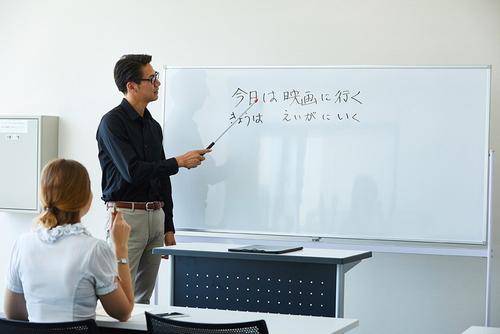Have you ever heard of the term "easy Japanese"?
Recently, it has been featured in the media and is gaining attention as a communication tool with foreigners.
"Easy Japanese" is Japanese that is simpler than regular Japanese and easy for foreigners to understand.
By being a little more conscious of speaking the Japanese you normally use casually, such as by replacing difficult words with simpler ones and shortening sentences, you can make it easier for foreigners to understand you.
It is said that the concept of "easy Japanese" first came to the forefront after the Great Hanshin-Awaji Earthquake of 1995.
The area affected by the earthquake was home to not only Japanese people but also many foreigners.
Many of these people were unable to fully understand either Japanese or English and were unable to receive the information they needed during the earthquake.
This led to the creation of "easy Japanese" as a means of conveying information quickly and accurately, especially in times of disaster.
Usage examples
Currently, "Easy Japanese" is being used in a variety of places.
Many local governments are taking steps to improve this not only during disasters, but also by publishing lifestyle magazines aimed at foreigners living in Japan and guides to convey government information in an easy-to-understand manner.
Recently, it has been gaining attention in the medical field as a means of dealing with patients of diverse nationalities.
In addition, "NHK NEWS WEB EASY" is an online news site operated by NHK that provides news in easy Japanese for foreigners and elementary and junior high school students.
"Easy Japanese" is based on the idea of "kindness" - putting yourself in the other person's shoes - not just by replacing difficult words with simpler ones and shortening sentences, but also by speaking slowly and loudly, adding furigana (reading) to kanji characters, and using illustrations and photographs to make things easier to understand.
Therefore, easy Japanese can be said to be a communication tool that is considerate not only for foreigners, but also for people in diverse positions, such as children and the elderly.
How to make it
There are several rules for creating easy Japanese. Here, we will focus on two points that you can start incorporating right away.
Point 1: Rephrase difficult words into simpler ones
Try to rephrase words that you use every day without thinking about them into simpler terms. For example, try to be conscious of using Japanese words instead of Chinese or katakana words, and speak in standard language instead of honorifics.
Bring → bring
Go home → I'm going home
Take → Take the medicine
No Entry → Do not enter
Cancel → Quit
Rental → Borrow
When did you come to Japan? → When did you come to Japan?
Point 2: Keep sentences short.
When I try to transcribe what I usually say, I find that my sentences are surprisingly long.
To make it easier to convey information, keep in mind the rule of "one piece of information per sentence."
・Please fill in your address, name, and date of birth on this form and submit it.
→Please write your name, where you live, and your date of birth on this piece of paper. Then, hand it in.
Please wait here for a while, and when your name is called, please enter the examination room.
→Please wait here for a moment. (XX) will call your name. Please enter the examination room.
What do you think? Did you feel like you could do it starting tomorrow?
There are many foreigners living in Japan.
I'm sure there are foreigners with diverse backgrounds in your area, including international students, workers, and their families.
Please try speaking to them in simple Japanese.
lastly

I hold seminars on "Easy Japanese" at various locations, including companies and local governments.
At such events, there is something I always say to all participants at the end.
This means that "easy Japanese is not a technique, but a caring spirit."
There are several rules for creating easy Japanese, and it takes practice to master it.
Of course, simple Japanese as a technique is important, but more than that, the feeling of asking yourself, "Will the other person understand if I speak like this?" or "Is this way of saying it easier to understand?" is an essential part of simple Japanese.
For foreigners who are unsure about their Japanese, knowing that the person in front of them is listening to what they have to say and is there for them conveys more than words can.
It is often said that there is no correct way to speak simple Japanese. Instead of worrying about technique or correctness, try smiling and talking to foreigners nearby.
Author: Satoru Inoue
This article was originally published in Nihongo Biyori and has been partially re-edited by KARUTA.
